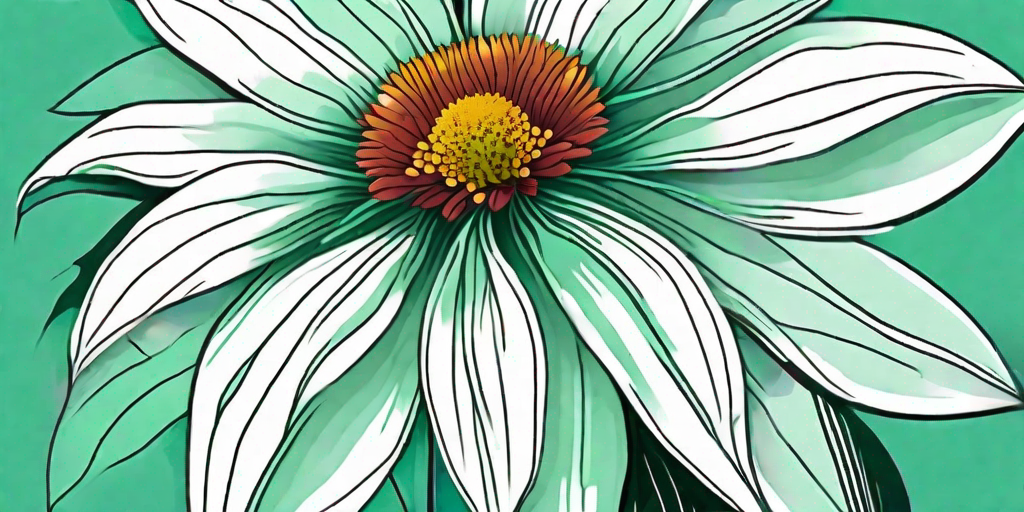
Welcome to the wonderful world of the blanket flower, a perennial plant that's as colorful as it is easy to grow. With its vibrant hues and hardy nature, it's a favorite among gardeners and landscapers alike. But don't be fooled by its beauty - this is a flower with a cheeky side, ready to brighten up your garden and maybe even your life.
The Basics of the Blanket Flower
First things first, let's get to know our star of the show. The blanket flower, or Gaillardia, is a genus of flowering plants in the sunflower family. It's named after M. Gaillard de Charentonneau, an 18th-century French magistrate who was a patron of botany. But don't worry, you don't need to be a French magistrate to grow these beauties.
Blanket flowers are native to North and South America, and they're known for their bright, bold colors. They typically bloom in shades of red, orange, and yellow, making them a fiery addition to any garden. They're also perennials, which means they'll come back year after year to keep your garden looking vibrant.
Why Choose the Blanket Flower?
With so many flowers out there, why choose the blanket flower? Well, aside from its stunning colors, it's also incredibly hardy. It can withstand heat and drought, making it a great choice for those less-than-ideal garden conditions. Plus, it's relatively low maintenance, so it's perfect for both gardening gurus and those who are still finding their green thumbs.
Blanket flowers also attract butterflies and bees, making them an excellent choice for those looking to support local pollinators. And let's not forget their long blooming season - from early summer to fall, you'll have a constant burst of color in your garden.
How to Grow Blanket Flowers
Now that we've piqued your interest, let's get down to the nitty-gritty: how to grow these vibrant beauties. Don't worry, it's easier than you might think.
First, you'll want to choose a sunny spot in your garden. Blanket flowers love the sun, and they need at least six hours of it each day. They're not too picky about soil, but they do prefer it to be well-draining.
Planting Your Blanket Flowers
Once you've chosen the perfect spot, it's time to plant. You can start blanket flowers from seeds, or you can buy young plants from a nursery. If you're starting from seeds, sow them directly into the soil in late fall or early spring. If you're using young plants, plant them in the spring after the risk of frost has passed.
When planting, make sure to space your blanket flowers about a foot apart. This gives them plenty of room to grow and spread. After planting, water them well and continue to do so regularly until they're established.
Maintaining Your Blanket Flowers
Once your blanket flowers are growing, they don't require much maintenance. Water them during dry spells, and deadhead spent blooms to encourage more flowering. You can also divide your blanket flowers every 2-3 years to keep them healthy and prevent overcrowding.
As for pests and diseases, blanket flowers are relatively resistant. However, they can sometimes be affected by powdery mildew or leaf spot, so keep an eye out for any signs of trouble.
Enjoying Your Blanket Flowers
Now for the best part: enjoying your blanket flowers. Whether they're adding a pop of color to your garden or attracting butterflies and bees, there's no shortage of ways to enjoy these vibrant perennials.
One popular way to enjoy blanket flowers is by using them in cut flower arrangements. Their long stems and bright colors make them a stunning addition to any bouquet. Just be sure to cut them in the morning when their water content is highest, and place them in water immediately.
Blanket Flowers in the Landscape
Blanket flowers also make a great addition to any landscape. They're perfect for borders, rock gardens, or even as a colorful ground cover. And because they're so hardy, they can thrive in areas where other flowers might struggle.
Another great way to enjoy blanket flowers is by attracting wildlife to your garden. As mentioned earlier, they're a favorite of butterflies and bees, so you can sit back and watch as your garden becomes a hub of activity.
Frequently Asked Questions
Are blanket flowers deer resistant?
Yes, blanket flowers are generally deer resistant. While no plant is completely safe from hungry deer, these are less likely to be on their menu.
Can I grow blanket flowers in a pot?
Absolutely! Blanket flowers can thrive in containers, making them a great choice for patios or balconies. Just make sure your pot has good drainage.
Do blanket flowers come back every year?
Yes, blanket flowers are perennials, which means they'll return year after year to brighten up your garden.
Wrap Up
So there you have it, a comprehensive guide to growing and enjoying the vibrant blanket flower. With its bold colors, hardy nature, and low maintenance needs, it's a great addition to any garden. So why not give it a try? You might just find it's the cheeky pop of color you've been missing.















